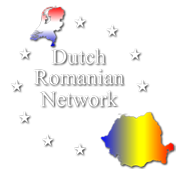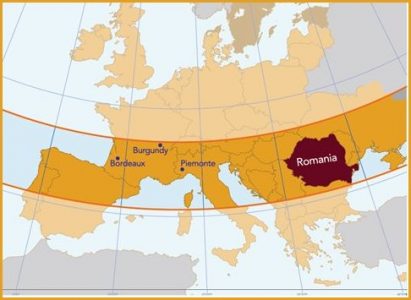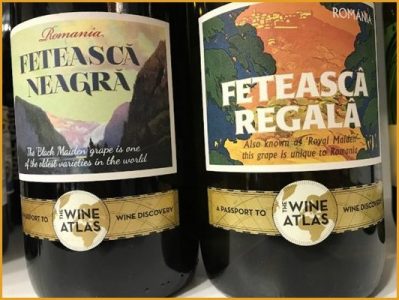Newsletter May / June 2021

DRN NEWS
This page has been automatically translated by WordPress WPML
DRN welcomes Heuver Banden from Hardenberg
What is now known as Heuver Banden is one of Europe’s leading tyre specialists. It started more than 50 years ago as a sole proprietorship of Mans Heuver. Heuver started in 1966, when Mans Heuver sold his first tyres. In the Netherlands there are a covering number of service points.
 In order to better serve European customers, there is a distribution centre in Bayreuth, Germany. Expansion to Poland, including its own Polish team.
In order to better serve European customers, there is a distribution centre in Bayreuth, Germany. Expansion to Poland, including its own Polish team.
From now on Heuver has teams in the Benelux, Germany, Austria, Switzerland, France, Great Britain, Romania and Scandinavia. If you look at their website, they can rightly be characterised as the European tyre specialist and certainly not only focused on the transport sector, but also on the agricultural and construction sector.
It is certainly worth consulting their news page on the website because in their field they can certainly be called the specialist of Europe. For example, they also draw your attention to the EU’s new Global Safety Regulation, which is a striking change from the previous version. As of July 2022, it is also mandatory for semi-trailers and trailers to be equipped with a tyre pressure monitoring system, the so-called TPMS (Tyre Pressure Monitoring Systems).
For more information see: www.heuver.com or www.heuver.nl
DRN Webinar about the consequences of the European Mobility Package
For some time now, there has been growing criticism from Dutch international logistics companies, as also in other EU member states, against the introduction of the so-called Mobility Package. Because the DRN has a substantial number of members from the logistics sector, it has been decided to join forces and invite the EU Commissioner of Transport Adina Valean, who is known to the DRN because of her Romanian nationality.
 Recently, Dachser also joined the critical voices, citing Aart van der Meer (Managing Director Dachser Benelux:
Recently, Dachser also joined the critical voices, citing Aart van der Meer (Managing Director Dachser Benelux:
Van der Meer expects that price dynamics in road transport will come under further pressure in the coming years due to the introduction of the EU Mobility Package, which includes new rules for driving and rest times. ‘We will see that reflected in the prices of the transports themselves,’ says Van der Meer. Dachser does not have its own drivers and transport capacities, but uses the market to move its trailers across Europe. Sixty to one hundred drivers are active at each location. It concerns a fixed group of hired carriers, mostly own drivers or smaller transport companies up to about ten vehicles. Dachser’s own fleet consists of around twelve thousand trailers and swap bodies. In the Netherlands and Belgium there are around eight hundred. ‘Transporters need to rethink long-distance transport. For us, that may mean that we have to couple three times instead of twice on a route. Or drive more often with two drivers instead of one. But ultimately that applies to all companies, and therefore there will be a new pricing. 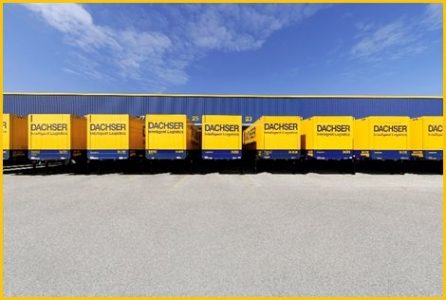 Consumers will also notice that.’
Consumers will also notice that.’
The mobility package will also further strengthen the already acute driver shortage, Van der Meer expects. According to the Dachser director, more attention should therefore be paid to developments such as LHV trucks (Long Heavy Freight Vehicles). In the Netherlands, Dachser has been driving the extra-long trucks on certain routes for ten years, and since this month the company has a license to drive LHVs to certain destinations in Germany. ‘Instead of one and a half or even two trailers, you only have one transport movement. That is a considerable saving.’
The webinar will take place around September, about which more information will follow.
Sources: Nieuwsblad Transport, Dachser, DRN Logistics Sector.
Dutch situation of Romanian Labor Migrants
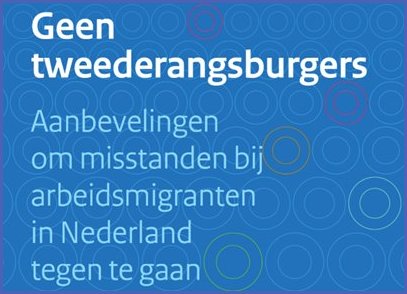 The Dutch Consular Romania Corps has also reported the recent abuses that took place in the Limburg village of Linne.
The Dutch Consular Romania Corps has also reported the recent abuses that took place in the Limburg village of Linne.
In general, the findings of Emile Roemer’s report, which was commissioned by Minister Wouter Koolmees, are generally endorsed. It is regretted that the House of Representatives wants to keep it during the caretaker status of the government, while it has not been shown that it has a controversial character. The advice of the Corps Consular Romania to be alert to companies and/or employment mediators who work with (Romanian) labor migrants has been adopted by the board of the Dutch Romanian Network.
Dutch consortium puts Romanian parliament building in green and other colors
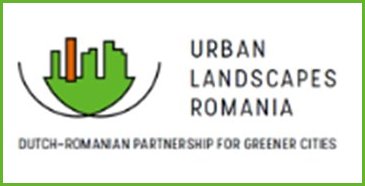
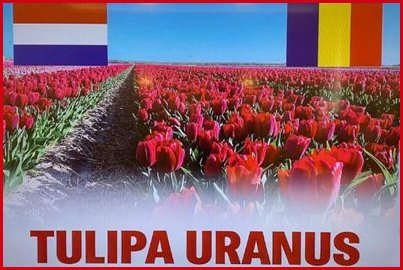 Recently, the Urban Landscapes Romania consortium officially opened the gardens around the parliament building, attended by, among others, the President of the Romanian Senate Anca Dragu.
Recently, the Urban Landscapes Romania consortium officially opened the gardens around the parliament building, attended by, among others, the President of the Romanian Senate Anca Dragu.
In addition to trees and hedges, flower bulbs were also planted during the ceremonial meeting. A new flower bulb will be named especially for this, the Tulipa Uranus, or Lalea Uranus. (Lalea is the Romanian word for Tulip, Uranus is the name of the former district where the House of Parliament is located.)
The gardens, over 3 hectares, were designed by young Romanian architects, in collaboration with VIC Landscapes. The basic idea is to connect with the “rich” pre-Communist past of the area – the city used to be called Little Paris.

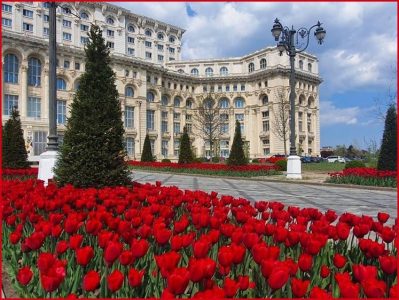 JUB Holland, Van den Berk Nurseries, Ebben Nurseries, VIC Landscapes, Nophadrain, Molter BV, Barenbrug, and Gebr. Seuren Rozenkwekerijen BV together. The project is coordinated by Agriprogress, in close collaboration with Royal Anthos. Under the name Urban Landscapes Romania, the Dutch green sector will be positioned in Romania for several years. This marks the start of a market development program aimed at the Romanian institutional market, the market for arranging gardens and the construction of parks, especially those in large cities. It also fits in with the EU program “Green cities for a sustainable Europe” and for that reason such plans are already on the drawing board at the Romanian cities of Cluj-Napoca and Timisoara, so the participants in the consortium have a good chance for follow-up assignments.
JUB Holland, Van den Berk Nurseries, Ebben Nurseries, VIC Landscapes, Nophadrain, Molter BV, Barenbrug, and Gebr. Seuren Rozenkwekerijen BV together. The project is coordinated by Agriprogress, in close collaboration with Royal Anthos. Under the name Urban Landscapes Romania, the Dutch green sector will be positioned in Romania for several years. This marks the start of a market development program aimed at the Romanian institutional market, the market for arranging gardens and the construction of parks, especially those in large cities. It also fits in with the EU program “Green cities for a sustainable Europe” and for that reason such plans are already on the drawing board at the Romanian cities of Cluj-Napoca and Timisoara, so the participants in the consortium have a good chance for follow-up assignments.
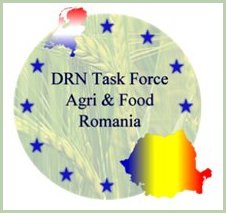 The Romanian Parliament and Senate are housed in the palace of former dictator Ceausescu in Bucharest. The size of this palace is enormous. It is the second largest building in the world and was built in the 1980s. A residential area called Uranus had to make way for this. The garden of this huge building was never properly arranged, and that made the building aloof. The Romanian Senate in Bucharest has therefore commissioned a Romanian and a Dutch landscape architect to design a garden that connects the palace and Romanian society, starting with the former district of Uranus. With this, the participating entrepreneurs have presented an excellent business card and the DRN Taskforce Agri compliments the consortium on the result!
The Romanian Parliament and Senate are housed in the palace of former dictator Ceausescu in Bucharest. The size of this palace is enormous. It is the second largest building in the world and was built in the 1980s. A residential area called Uranus had to make way for this. The garden of this huge building was never properly arranged, and that made the building aloof. The Romanian Senate in Bucharest has therefore commissioned a Romanian and a Dutch landscape architect to design a garden that connects the palace and Romanian society, starting with the former district of Uranus. With this, the participating entrepreneurs have presented an excellent business card and the DRN Taskforce Agri compliments the consortium on the result!
Spotlight on Hempflax…Nature wins!
 The DRN is a genuine entrepreneurial organization and attention is paid to the well-being of its members. This also applies to the special company Hempflax, led by CEO Mark Reinders. It is reasonable to say that growing hemp for industrial purposes cannot be called an everyday activity and there is certainly a chance to become the market leader in this special sub-sector at an international level.
The DRN is a genuine entrepreneurial organization and attention is paid to the well-being of its members. This also applies to the special company Hempflax, led by CEO Mark Reinders. It is reasonable to say that growing hemp for industrial purposes cannot be called an everyday activity and there is certainly a chance to become the market leader in this special sub-sector at an international level.
HempFlax currently has six product groups: building materials, animal care, horticulture, food supplements, industrial applications (automotive) and cultivation. The products have in common that they have added value for a large audience compared to existing products, whereby the price-quality ratio must be right and they must fit into the circular economy.
Started in Oude Pekela, they have had a branch in Romania for a long time (due to lack of space) and now also in Germany. HempFlax also wants to start up factories in the US and Canada. Working with an agricultural crop naturally has risks for the supply. You can have a bad harvest due to weather conditions. By working in different climate areas, you spread the risk. Hempflax is pre-eminently an innovative company for which they have entered into a partnership with Hanze University of Applied Sciences Groningen. In short, Hempflax is still going strong.
For further information, please refer to the website www.hempfax.com
Romanian elixir of life -A misunderstood export product
Romania wine country
As a wine country, Romania is not yet as well known as France, South Africa, Australia, Chile or Argentina, for example. Yet Romania, with its Mediterranean climate and fertile Danube Delta, has an age-old winemaking tradition dating back to the Greeks, who introduced viticulture to Dacia (modern Romania) some 3,000 years ago. Also in Roman times the area was famous for its wealth in viticulture. The winemaking tradition has been able to flourish throughout Romania’s history, including influences from Saxony in the Middle Ages and French and Western European influences in later times. Since the end of the last century, viticulture in Romania has been on the rise, mainly due to the new and old passionate owners of the wineries. As a result, viticulture in Romania has regained a lot of potential for a good future.
The Dealu Mare . wine region
Viticulture is common throughout Romania. We take the wines of the Dealu Mare region as a random example. This region is a Protected Designations of Origin (PDO), included in the European Union directives. Geographically, this region is at the same altitude or latitude as the south of France. knows the history. The typical warm and dry climate, the relatively long autumn period and the warm days and cool nights allow the grapes to ripen slowly and thoroughly, so that the varied aromas of the grapes come into their own. Moreover, the soil of the region is strewn with fossils of shellfish, giving our wines a unique character and their own unique taste and aftertaste.
Grape Varieties in Romania
Our wineries in Romania work with internationally renowned grape varieties, including Chardonnay, Pinot Grigio, Pinot Noir, Merlot, Shiraz, Viognier, Cabernet Sauvignon and Cabernet Franc. In addition, Romania has a number of indigenous grape varieties, such as Feteasca Alba and Feteasca Neagra, where the wineries are happy to cooperate. The Feteasca Neagra, the black girl or virgin, is a red grape variety purely from Romanian soil. This grape gives our red wines a characteristic ruby red color and a full, fresh, fruity and spicy aroma, taste and aftertaste.
The Feteasca Alba, the white girl, is a white grape variety purely from Romanian soil. This grape gives the white wines complexity and structure and a dry, fruity and sweet smell, taste and aftertaste.
The Fetaesca Regala, the princess or princess grape, a white grape variety purely from Romanian soil. This grape gives the white wines a fresh, dry taste of citrus and a hint of tropical fruit in the aftertaste.
Agricover Credit IFN has opened its tenth national branch in Brașov
Agricover Credit IFN, a non-bank financial institution that specializes exclusively in lending to companies in the agricultural sector, opened its first branch in the center of the country in Brașov on 3 June. This is the company’s tenth branch nationwide.
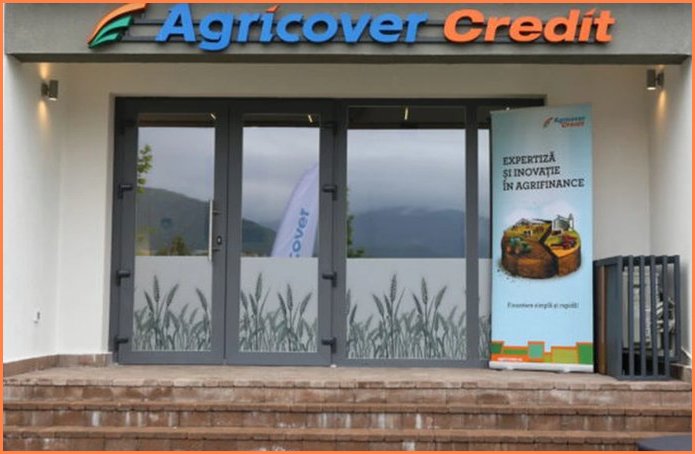
“Today we are with farmers in the center of the country as a sign of appreciation and recognition for the extraordinary work they are doing in this region, which has great growth potential, both in the vegetable sector, especially potato and organic farming, and in livestock farming.” said Robert Rekkers, CEO of Agricover Credit. Robert Rekkers is also part of the DRN Task Force Agri & Food, which significantly strengthens its advisory capacity for its members.
The opening of the branch in Bra vestigingov is part of Agricover Credit IFN’s strategy to be as close as possible to the farmers and to respond quickly to their requests. Agricover Credit IFN wants to finance more than 250 farmers in the area in the coming period with loans worth 100 million lei.
“We want more openness to the small and medium-sized farmers segment, but we also continue to support large farmers. In this sense, we have developed special solutions and programs such as: investments for the acquisition of agricultural land, the expansion of the farm and in irrigation systems” said Robert Rekkers.
Agriculture is an important economic component in the region, but developing a successful agricultural sector requires specialized solutions.
“In this region, due to the large growing areas, especially potato cultivation, there is a huge potential for investment in specific equipment and machines, storage and conservation areas. In addition to agricultural crops, the region is rich in grazing areas and is conducive to the development of livestock farming , in particular beef farming.” continued Robert Rekkers, general manager Agricover Credit.
About the Agricover group
 Agricover Credit IFN, a subsidiary of Agricover Holding, is the first financial institution in Romania to offer financial products exclusively to farmers in the vegetable and livestock sector. Knowledge and understanding of the specificities of agricultural activities enable the development of innovative products for financing working capital and investments in a flexible way, adapted to the needs of farmers.
Agricover Credit IFN, a subsidiary of Agricover Holding, is the first financial institution in Romania to offer financial products exclusively to farmers in the vegetable and livestock sector. Knowledge and understanding of the specificities of agricultural activities enable the development of innovative products for financing working capital and investments in a flexible way, adapted to the needs of farmers.
Agricover Credit has grown rapidly and in just a few years has become one of the major players in agricultural producer financing. In 2020, Agricover Credit provided loans for an amount of 1,900 million lei to 3,800 farmers nationwide.
Agricover Holding brings together the activities of the group entities Agricover SA, Agricover Credit IFN SA and Agricover Technology SRL. The group serves a portfolio of more than 6,000 active agricultural customers, operating more than 2.2 million hectares of arable land nationwide.
Romanian Farmers Propose – National Strategic Potato Plan to Save Sector
The Romanian Peasant Club and the Romanian National Potato Federation propose to the authorities to implement a National Strategic Potato Plan, to rescue an economic sector in great difficulty and to improve the trade balance, which now registers a deficit of 50-60 pc. harmonize, the representatives of the two organizations say. The main limiting factors in potato cultivation in Romania are the excessive fragmentation of the land, often a low technical level, small farms, poor quality seed potatoes and above all lack of sufficient storage space. “Romania should be in second place at the European level in terms of arable land for potato cultivation, but the low yield and lack of individual warehouses of the Romanian farmers cannot give us this prestigious position in the continental ranking.
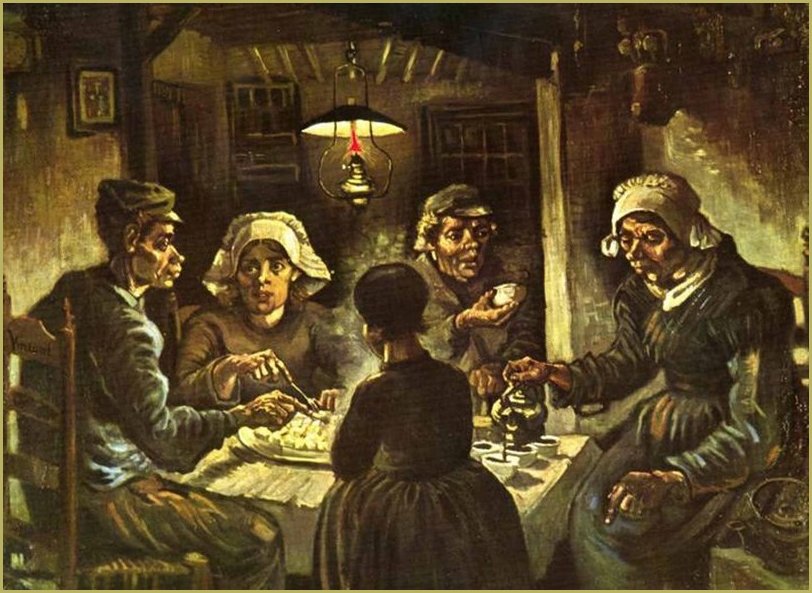
Unfortunately, Romanian potato growers have to sell their production at low prices immediately after harvest, due to the lack of storage space in optimal conditions all year round. In this way, a massive potato import takes place in our country every year,” said Laszlo Becsek, vice president of the Romanian Farmers Club. According to a release from the two organizations, the Romanian Farmers Club and the National Potato Federation had a first meeting with the Minister of Agriculture, Adrian-Nechita Oros, in which the proposal for the implementation of a National Strategic 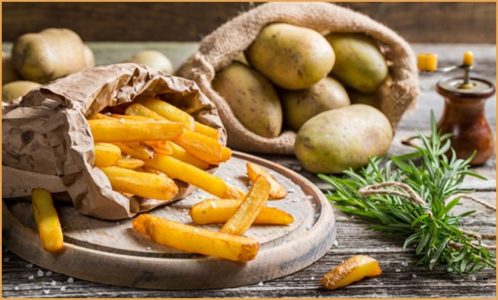 Potato plan was presented. The two organizations argued for the need for the ministry to re-analyze the partial distribution of the amounts allocated to the aid linked to the early potato industrialization measure and seed potatoes. The Club and the Federation have analyzed this and provided the Ministry with detailed economic and technical data. “We believe that the repeated redistribution, every year, of the amounts allocated to this crop to other measures seriously harms the potato growers, very few growers who have already suffered significant losses from the table potato crop, which in 2020 was below cost price. The low price of table potatoes will also be directly reflected in the few seed potato growers left in Romania, who have practically no customers and risk drastically reducing the acreage forecast for the current year,” said Romulus Oprea, President of the Potato National Federation in Romania. Worldwide, approximately 388 million tons of potatoes are produced annually on approximately 19.1 million hectares. China is the largest producer with an annual production of between 66 and 71 million tons. Other major producers are Russia, India, Poland, USA, Ukraine, Germany, the Netherlands and Belarus. The average production worldwide is about 20.33 t/ha. However, there are large fluctuations in this and many industrialized countries produce more than 53 t/ha. In industrialized countries, the consumption of fresh potatoes remains constant, while the market for further processing of potatoes is growing due to the increasing popularity of ready-to-eat meals.
Potato plan was presented. The two organizations argued for the need for the ministry to re-analyze the partial distribution of the amounts allocated to the aid linked to the early potato industrialization measure and seed potatoes. The Club and the Federation have analyzed this and provided the Ministry with detailed economic and technical data. “We believe that the repeated redistribution, every year, of the amounts allocated to this crop to other measures seriously harms the potato growers, very few growers who have already suffered significant losses from the table potato crop, which in 2020 was below cost price. The low price of table potatoes will also be directly reflected in the few seed potato growers left in Romania, who have practically no customers and risk drastically reducing the acreage forecast for the current year,” said Romulus Oprea, President of the Potato National Federation in Romania. Worldwide, approximately 388 million tons of potatoes are produced annually on approximately 19.1 million hectares. China is the largest producer with an annual production of between 66 and 71 million tons. Other major producers are Russia, India, Poland, USA, Ukraine, Germany, the Netherlands and Belarus. The average production worldwide is about 20.33 t/ha. However, there are large fluctuations in this and many industrialized countries produce more than 53 t/ha. In industrialized countries, the consumption of fresh potatoes remains constant, while the market for further processing of potatoes is growing due to the increasing popularity of ready-to-eat meals.
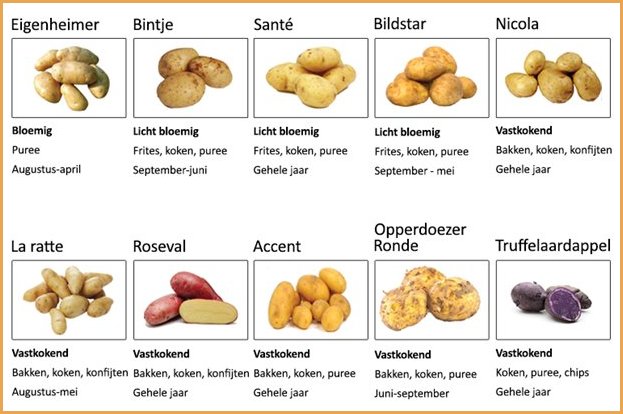
The consumption of fresh potatoes in developing countries is increasing because people there have started to use more versatile foods.
Romanians are among the largest consumers of potatoes in Europe, with about 94 kg per year, of which more than 20 kg are large, poor quality potatoes, which are imported at very low prices, according to the Romanian Potato Federation. “Potatoes with a diameter larger than 20 cm are sold abroad at 35-40 euros per ton. They are not poisonous, not spoiled, but have less culinary qualities. They are less tasty because they contain more water,” said George Botoman , President of the Federation.
It seems to us that the situation on the Romanian potato market could use a helping hand from the potato eaters from Vincent van Gogh’s country.
Romania – drought makes the country dependent on food imports
Romania imports a large part of its staple food and is increasingly dependent on countries such as Italy, Spain, France or Germany. Meat, cheese and frozen pastries are among the top foods imported from abroad. According to data from the Ministry of Agriculture, their value is 1.2 billion euros, which is about 15% of the total recorded last year. According to the Ministry of Agriculture, pork ranks first among the most imported foodstuffs with an import of 589 million euros.
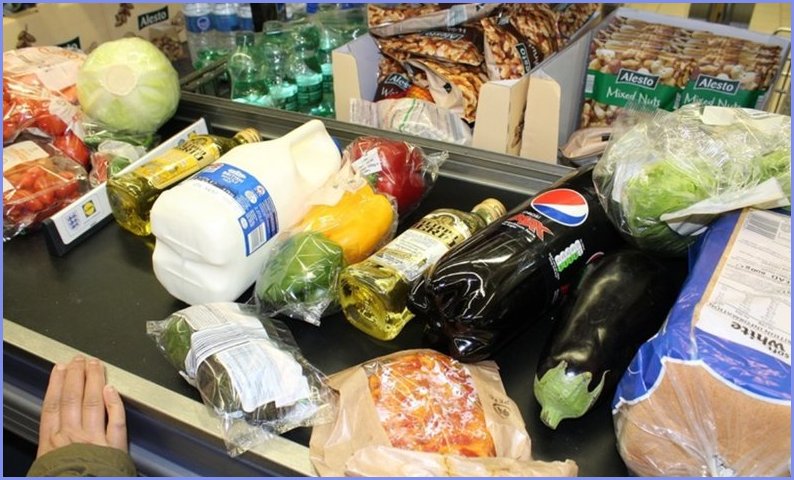 The next positions are occupied by cheese and curd, coffee, chocolate and bakery products, pastries and biscuits, with a value from 200 million euros each. Romania imports very large quantities of finished products, as many of our factories are not active. Currently only 60% of the processing capacity is used. Data from the Ministry of Agriculture shows that imports last year amounted to 8.9 billion euros and exports 6.9 billion euros. The most imported foods in 2020: 1. Pork – 589 million euros 2. Cheese and cottage cheese – 263 million euros 3. Coffee – 224 million euros 4. Chocolate – 211 million euros 5. Pastries – 207 million euros.
The next positions are occupied by cheese and curd, coffee, chocolate and bakery products, pastries and biscuits, with a value from 200 million euros each. Romania imports very large quantities of finished products, as many of our factories are not active. Currently only 60% of the processing capacity is used. Data from the Ministry of Agriculture shows that imports last year amounted to 8.9 billion euros and exports 6.9 billion euros. The most imported foods in 2020: 1. Pork – 589 million euros 2. Cheese and cottage cheese – 263 million euros 3. Coffee – 224 million euros 4. Chocolate – 211 million euros 5. Pastries – 207 million euros.
Irrigation problems
“Had we not had a pedological drought in the whole southeastern region, the trade balance would have been somewhat in equilibrium, because Romania is known as an exporter of raw materials. We have come to import 70% of what we consume,” said Aurel Simion , Secretary of State at the Ministry of Agriculture.
However, after a year and a half of discussions with the European Commission, there is still a stalemate and the irrigation system in Romania is not funded by the National Recovery and Resilience Plan (PNRR).
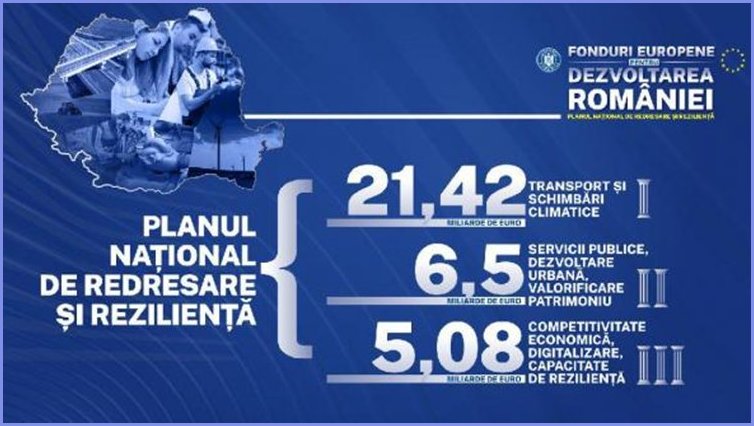
The European Commission rejected the project submitted in November by the Ministry of Agriculture, which included the installation of photovoltaic panels above the main irrigation channels. Agriculture can be financed with 300 million euros, compared to 6.5 billion euros for the project. Although it is a “death eater” to say that “who pays, also determines” we believe that specific situations in EU Member States can differ greatly and require a different approach. The DRN wishes both parties a lot of wisdom, because after all, it is about very basic food supply.
Shipbuilding sector
Unique Australian research vessel breaks the ice thanks to Damens Hollands Glorie
Since 2016, the Dutch Damen Naval has been responsible for the design and construction of the Antarctic icebreaker RSV Nuyina. This will be the main supply vessel for the Australian Antarctic and Sub-Antarctic Research Stations. In addition, it is a complex platform for scientific research in Antarctica and the Southern Ocean. After a period of construction in Romania and commissioning and sea trials from Vlissingen, this ‘state of the art’ research vessel is now ready for her first trials near the North Pole. The Nuyina was built as part of the ‘Australian Antarctic program’. One of its main functions is to find marine organisms and map the seabed. To this end, the Nuyina has various acoustic instruments, which are mounted in the hull. In order for these instruments to work properly, a relatively quiet underwater environment must be created. An icebreaker challenge with oversized engines and propellers. Therefore, based on knowledge of the construction of Dutch naval vessels, a lot of work has been put into the design of the hull and the propulsion system. This is to reduce noise from engines, gearboxes, propellers and the formation of bubbles under water.

The Nuyina is the only ship in the world that has a wet well for seawater research for krill and other vulnerable organisms. It also has opportunities to conduct sea ice and ice sheet research. The ship also serves as a base for people or equipment, which are transported by helicopter to remote places on the Antarctic ice sheet.
Damen Schelde Naval Shipbuilding is responsible for the design, engineering and construction, in addition various subcontractors and suppliers from the Netherlands were involved. As such, this project has made an important contribution to the innovative capacity of naval construction in the Netherlands. During the construction, Damen Schelde Naval Shipbuilding in Vlissingen will be the main contractor who, in close collaboration with more than eighty Dutch maritime suppliers, are allowed to build this ship. These include Alewijnse Marine Systems, Alphatron Marine, Bakker Sliedrecht, Heinen & vHopman Engineering, Pon Power and Radio Holland.
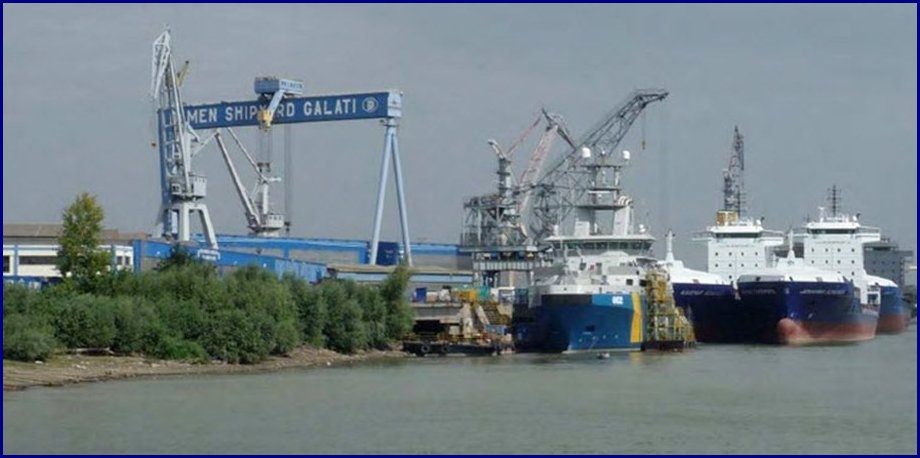
The ship must soon be able to perform various tasks in the Antarctic and Southern Oceans. In addition, it must be able to break ice up to a thickness of 1.65 meters. In addition to logistical services, the ship’s tasks include scientific research aimed at global warming and the protection of (sub)antarctic ecosystems.
The ship was built at the Damen shipyard in the Romanian city of Galati.
There is light on the Romanian horizon for Damen Shipyards
Overall, new shipbuilding orders in Europe fell 64% in tonnage last year compared to 2019 (nominal: 40% in decline). In response to this situation, Damen had to announce a reorganization on 6 July 2020, which unfortunately meant the loss of 642 jobs at the Galati site and 228 jobs at the Mangalia site, as well as several hundred jobs at the Damen site in the Netherlands. The necessary reorganization in Galati has already been completed. For various reasons, this has not yet happened in Mangalia and the shareholders (51% owned by the Romanian state) are called upon to decide by the end of June 2021 on the restructuring program already proposed, which mainly affects indirect and support staff. The need to do this has meanwhile intensified to make the site sustainable and liveable,” said Damen. They add that Damen would face a lack of substantial activity and may need to consider additional measures that align the cost structure of the two sites with economic realities.

Earlier this year, the CEC (Casa Generala de Economii) state bank provided a loan of 60 million lei to the Damen yard in Mangalia to finance its current operations.
The Damen Group wrongly lost (see Article 346 Treaty of Lisbon) the tender of 1.2 billion euros for the supply of multipurpose corvettes to the Romanian navy in favor of the French of the Naval Group, but the process by which the Dutch of the auction is still ongoing. Reminder: During the liberal government of Tariceanu (2004-2008), this government, through the Minister of Defense Mihnea Motoc, awarded the order to Damen Shipyards in accordance with EU regulations that allow military orders not to be tendered internationally. The subsequent socialist government Ponta canceled the agreement that had already been concluded and found that an international tender had to take place. The fact that the international tender did not run smoothly after that may be an indication that the order for Damen Shipyards was canceled with premeditation.
And the good news is that last month, according to defenseromania.ro, the Supreme Court of Cassation and Justice granted Damen’s request to send the file to the Constitutional Court.
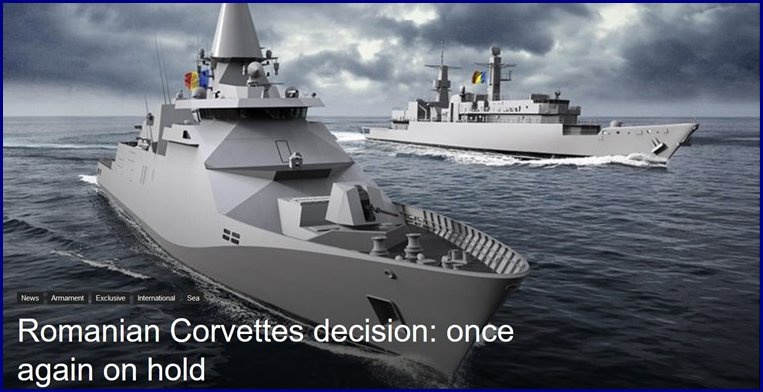
In November 2018, the Competition Council approved the transaction whereby BV Holding Maatschappij Damen, Netherlands, and Șantierul Naval 2 Mai SA acquired Daewoo Mangalia Heavy Industries SA and Daewoo Mangalia Human Resources Management SRL. In July of that year, the government amended the corporate governance legislation of state-owned companies by emergency decree to hand over the management of the Mangalia shipyard to the Dutch in exchange for the acquisition of 2% of the company. capital from them. , making the Romanian state again the majority shareholder of the site, with 51% of the shares.
Keel laying Combat Support Ship at Damen Naval in Romania
On 2 June, the keel of the new Combat Support Ship Den Helder was laid at Damen Shipyards Galati (Romania). This marks an important milestone in the construction of this new supply vessel for the Royal Netherlands Navy (KM). The keel laying ceremony was jointly performed by the Director of Defense Materiel Organization (DMO) Vice Admiral Arie Jan de Waard and the Commander Naval Forces, Vice Admiral Rob Kramer.
The steel for this new ship has been cut since December last year. After this keel laying, all building blocks for the actual construction of the ship in Romania are ready.
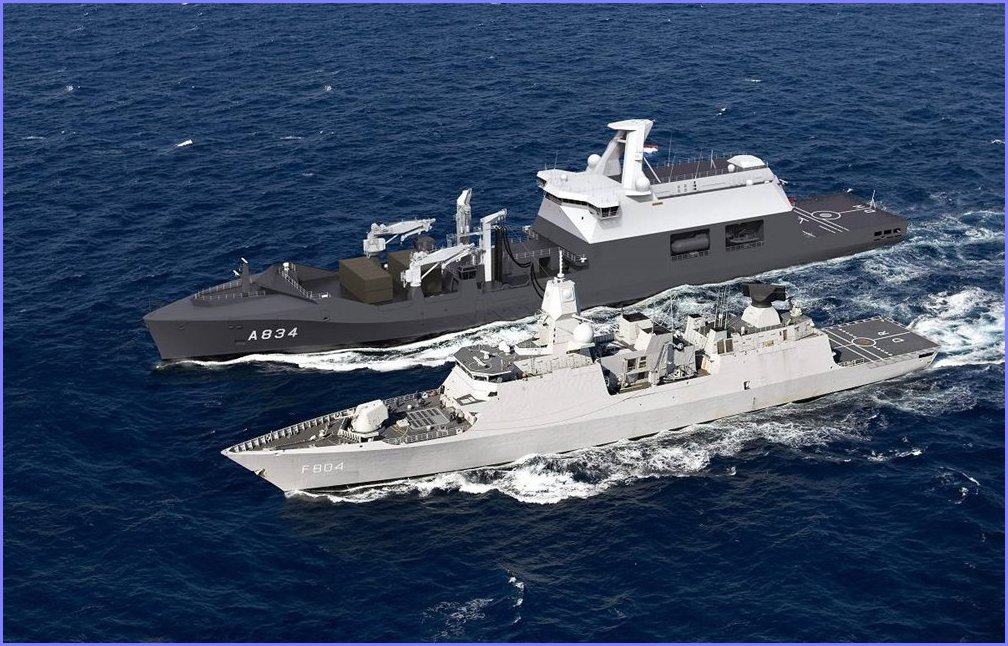
The engineering of the Combat Support Ship largely takes place from the Netherlands. Damen Naval Director, Hein van Ameijden, emphasizes that it is mainly the collaboration with companies from the existing naval construction chain that makes the innovative construction of Dutch naval ships possible: “More than a year after the contract for this ship was signed, Damen Naval has 116 concluded purchasing contracts, of which 82 with Dutch suppliers. These mostly come from the Rijnmond and Zeeland. It is this entire chain of companies that contributes to the construction of this new ship for the Royal Netherlands Navy.”
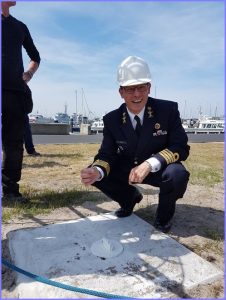 In addition to emphasizing the good cooperation between all parties involved, the keel laying also has a traditional value. In the past, a coin was placed under the wooden mast for prosperity. Nowadays, with the ships made of steel, the coin is placed in the double bottom. Both admirals were allowed to perform this operation at the Combat Support Ship. A coin dating from 1822 was placed for the occasion. An important year for the navy, in which after various plans and initiatives to build forts in the Napoleonic era, the naval establishment with dry dock in Den Helder was handed over to them. The next ceremonial milestone will be the ship’s christening, but this will not take place until after the ship is completed in 2023. After commissioning, testing and the site trial trip, the ship will sail to Den Helder where it will be handed over to the DMO. The ship accessories and the Combat Management System will then be installed before the ship is handed over to the Navy by the DMO in 2025.
In addition to emphasizing the good cooperation between all parties involved, the keel laying also has a traditional value. In the past, a coin was placed under the wooden mast for prosperity. Nowadays, with the ships made of steel, the coin is placed in the double bottom. Both admirals were allowed to perform this operation at the Combat Support Ship. A coin dating from 1822 was placed for the occasion. An important year for the navy, in which after various plans and initiatives to build forts in the Napoleonic era, the naval establishment with dry dock in Den Helder was handed over to them. The next ceremonial milestone will be the ship’s christening, but this will not take place until after the ship is completed in 2023. After commissioning, testing and the site trial trip, the ship will sail to Den Helder where it will be handed over to the DMO. The ship accessories and the Combat Management System will then be installed before the ship is handed over to the Navy by the DMO in 2025.
The ship was designed in close collaboration with the DMO (Defence Materiel Organisation) and the navy. It is based on the Joint Support Ship Zr.Ms. built by Damen previously. Karel Doorman. The nearly 180-meter long ship will have a 75-person base crew and can take eighty-five extra people on board. In addition to space for fuel and ammunition to supply other ships, there is room for several helicopters and twenty containers.
Aviation sector
Commercial aircraft market recovers to pre-pandemic levels in 2023 – 2025
European aviation group Airbus maintains its expectation that the commercial aircraft market will recover to pre-pandemic levels between 2023 and 2025, due to increased demand in the single-beam aircraft segment, DPA and Reuters report.
Airbus is present in Romania with all three divisions: Airbus Helicopters Romania (2002) and Premium Aerotec (2009) in Brasov and Airbus Defense and Space (2005) in Bucharest.
 The world’s largest aircraft manufacturer has sent suppliers an update on its production plans to plan the necessary investments and ensure the long-term availability of production capacity, in line with the expected recovery.
The world’s largest aircraft manufacturer has sent suppliers an update on its production plans to plan the necessary investments and ensure the long-term availability of production capacity, in line with the expected recovery.
Airbus confirmed that the production rate for the A320 series will average 45 aircraft per month in the fourth quarter of 2021. The company has asked suppliers to prepare for the future by supplying components for the production of 64 aircraft per month in the second quarter. 2023 and possibly 70 aircraft per month in the first quarter of 2024. In the long term, Airbus could reach production of 75 aircraft per month by 2025.
In the A220 range, production is currently around five aircraft per month and is expected to reach six by early 2022 and 14 by 2025. and the A330 series will maintain a production rate of two aircraft per month.
“The aviation sector is starting to recover from the crisis caused by Covid-19. The message to our suppliers gives visibility to the entire industrial ecosystem to ensure the necessary capabilities and to be prepared when market conditions improve,” said CEO Guillaume Faury.
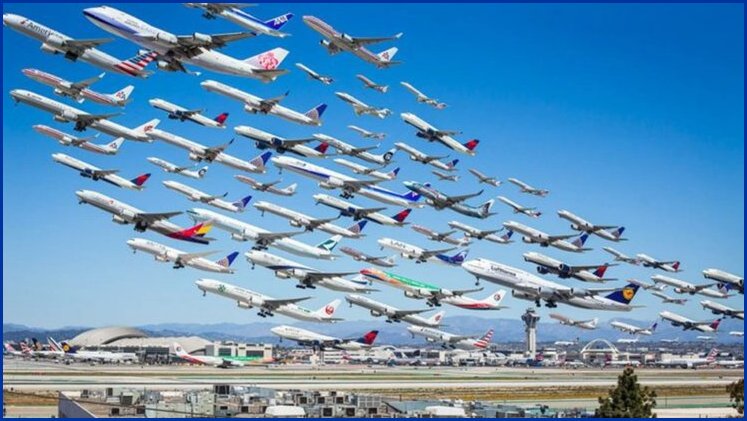
Shares of Airbus rose 6.8% on Thursday, reaching almost EUR 104.54, the highest level in 52 weeks.
Demand for the single-aisle segment is recovering from the increase in domestic air travel, especially in the United States and China.
On Wednesday, the International Air Carrier Association (IATA) estimated that the number of passengers carried by airlines around the world will return to 2023 in 2023, before the Covid-19 pandemic that led to a collapse in air traffic.
This year passenger numbers are expected to be 52% below pre-crisis levels, and will return to 88% of pre-pandemic levels next year. Only in 2023 will passenger air transport reach 2019 levels (105%), reaching 5.6 billion passengers by the end of the decade, after an average annual increase of 3.9% between 2025 and 2030, IATA predicted, representing approximately 290 airlines worldwide, the equivalent of 82% of global air traffic.
Last year, Airbus announced an unprecedented restructuring plan to cut about 15,000 jobs as a result of the pandemic.
Airbus is a world leader in aerospace, aerospace and related services. In 2019, it generated a turnover of 70 billion euros and had 135,000 employees. Airbus also offers a wide range of passenger aircraft, from 100 to more than 600 seats. Airbus also provides helicopters, tankers, fighter jets, transport and other missions.
Financial sector
Gross profit of ING Bank Romania increased
ING Romania’s gross profit increased by 11% in the first quarter compared to last year to 183 million lei. Financial data presented by the Dutch bank also shows that the level of personal loans has returned to pre-pandemic levels, up 50% from the previous quarter. In terms of payments, the preference for cards over cash remains in the first three months of 2021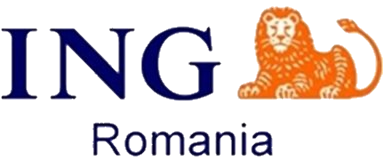 exist, with a ratio of 55% to 45%. “The first three months of this year bring the prospect of a return to normalcy closer, including in the economic and financial context. In the case of our bank, profitability has increased this quarter and demand for mortgages and personal needs has returned to pre-pandemic levels. At the same time, we see an increasing need for diversification of investments and the use of digital payment methods. We continue to support the business environment, including through the financing provided under the umbrella of the SME Invest program,” said Mihaela Bîtu, CEO of ING Bank Romania. Card use has increased at the expense of cash withdrawals. More than half of the spending of ING customers is made with cards and mobile devices in the cash register. Mobile payments (ING Pay, Apple Pay and Google Pay) already account for 15% of the total volume, while online shopping transactions have increased by 27%. To support this growing trend of online shopping, ING recently introduced the ability to copy card details directly from the mobile app for faster and easier online payments, a highly anticipated feature among customers. The production of consumer credit increased by 50% in the first quarter compared to the last months of 2020.
exist, with a ratio of 55% to 45%. “The first three months of this year bring the prospect of a return to normalcy closer, including in the economic and financial context. In the case of our bank, profitability has increased this quarter and demand for mortgages and personal needs has returned to pre-pandemic levels. At the same time, we see an increasing need for diversification of investments and the use of digital payment methods. We continue to support the business environment, including through the financing provided under the umbrella of the SME Invest program,” said Mihaela Bîtu, CEO of ING Bank Romania. Card use has increased at the expense of cash withdrawals. More than half of the spending of ING customers is made with cards and mobile devices in the cash register. Mobile payments (ING Pay, Apple Pay and Google Pay) already account for 15% of the total volume, while online shopping transactions have increased by 27%. To support this growing trend of online shopping, ING recently introduced the ability to copy card details directly from the mobile app for faster and easier online payments, a highly anticipated feature among customers. The production of consumer credit increased by 50% in the first quarter compared to the last months of 2020.  Digital lending has intensified and amounts to 35% of total personal loans. Demand for mortgages continues the upward trend from last year, with strong interest in the 7FIX fixed rate mortgage product, which contributes 60% of total mortgages issued. In addition to traditional savings instruments, customers are increasingly turning to mutual fund investments. ING reported a 60% increase in its investment fund portfolio over the past 12 months. ING customers have consistent investment behaviour, many of them investing small amounts, but consistently and over the long term. Of the total number of clients who have had access to mutual funds, almost half have activated a regular investment plan.
Digital lending has intensified and amounts to 35% of total personal loans. Demand for mortgages continues the upward trend from last year, with strong interest in the 7FIX fixed rate mortgage product, which contributes 60% of total mortgages issued. In addition to traditional savings instruments, customers are increasingly turning to mutual fund investments. ING reported a 60% increase in its investment fund portfolio over the past 12 months. ING customers have consistent investment behaviour, many of them investing small amounts, but consistently and over the long term. Of the total number of clients who have had access to mutual funds, almost half have activated a regular investment plan.
As a result of the centralization of platforms for legal entities, the number of Business Banking customers using ING Business has increased by more than 400% compared to the same period in 2020. This implicitly led to an increase in authentications of more than 220%, of which 38% was via mobile, and a 230% increase in the number of transactions. The rapid intensification of the use of mobile devices resulted in the launch of a continuous program of functional enhancements, for an experience adapted to the needs of entrepreneurs: accessibility, navigation, operational management of the current activity. The Business Banking division also announced that ING will join the SME Invest program in its second year of development, with resources of 1.1 billion lei allocated for 2021. In March 2021, the Wholesale Banking division facilitated the issuance of a floating rate bond in a private placement for the International Investment Bank. This transaction meant a negative financing rate in euros for the issuer for the first time.

At the same time, ING consistently remains among the top primary dealers in Romania, ranking first in this ranking in the first quarter. ING Bank Romania is part of ING Group, a global international financial institution that offers banking services to more than 38.8 million individual customers, companies or institutions in more than 40 countries. Founded in 1994, ING Bank Romania is the fourth bank in the top 10 local banks by asset base.
Economic Outlook IMF – Romania
IMF predicts a strong recovery of the Romanian economy this year, with a GDP increase of 7%
The experts at the International Monetary Fund estimate a strong economic recovery in Romania for 2021, with real gross domestic product increasing by 7 percent, indicating, however, that the main risk of not realizing this forecast is that of unexpected negative changes. in the pandemic, according to the conclusions published following the mission to evaluate the Romanian economy.
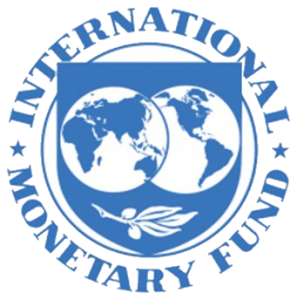 “A strong real GDP return of 7 percent is expected for 2021. Romania’s economic recovery appears to be the fastest of the EU countries, starting in the 4th quarter of 2020. The main risk of not realizing this forecast is that of some unexpected negative changes in the evolution of the pandemic, including the emergence of new virus strains, the lower efficiency of the vaccine or the refusal of vaccination by the population”, states the IMF statement after the consultations on Article IV.
“A strong real GDP return of 7 percent is expected for 2021. Romania’s economic recovery appears to be the fastest of the EU countries, starting in the 4th quarter of 2020. The main risk of not realizing this forecast is that of some unexpected negative changes in the evolution of the pandemic, including the emergence of new virus strains, the lower efficiency of the vaccine or the refusal of vaccination by the population”, states the IMF statement after the consultations on Article IV.
The experts of the international financial institution show in the context that the Romanian economy coped relatively well with the COVID-19 crisis and that the GDP contraction caused by the pandemic in 2020 was significantly lower than the EU average.
“This partly reflected a more limited initial incidence of virus outbreaks and subsequent waves of short-term infection, which did not require a second nationwide shutdown. Effective health measures and an early start to the vaccination campaign also contributed to this situation. Importantly, the population and business environment benefited of a coordinated easing of fiscal and monetary policies, which helped to mitigate the economic recession and rising unemployment, which was a welcome change from the policy tightening measures implemented by Romania in previous economic crises,” explains the quoted source.
According to the IMF, external financing was favourable, supported by global monetary easing and EU support measures.
At the same time, the representatives of the Washington-based institution recall that the authorities have provided the necessary fiscal support, similar to that of other EU countries: first of all, the increase in health costs; secondly, income support measures in the form of temporary wage subsidies and targeted employment incentives; and third, support to businesses in the form of non-repayable loans and liquidity security by deferring tax and fee obligations and providing credit guarantees, especially for SMEs. These support measures were extended in 2021.
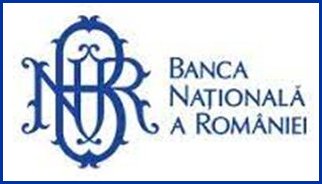
On the other hand, according to the IMF, the timely measures taken by the National Bank of Romania (BNR) have contributed to ensuring the functioning of the financial market and supporting the flow of credit during the pandemic. These measures include monetary policy rate cuts, a government bond purchase program and measures to ensure liquidity, relax the regulatory environment and moratoriums on bank loan repayments.
An IMF mission made a virtual visit to Bucharest on May 10-28 to discuss the Article IV consultation.
Political developments
Urgent request from the European Commission to the European Council to speedily effect the accession of Romania, Bulgaria and Croatia to the Schengen area.
On June 2, the European Commission asked the European Council (consisting of heads of government of the 27 Member States of the European Union) to give the green light “as soon as possible” for the accession of Romania, Bulgaria and Croatia to Schengen. The future of Schengen is to be marked by enlargement to include EU Member States that are not yet part of the Schengen area, as it is “a legitimate expectation” and “a legal obligation for those countries assessed as ready for accession”, according to the new Schengen strategy European Commission.
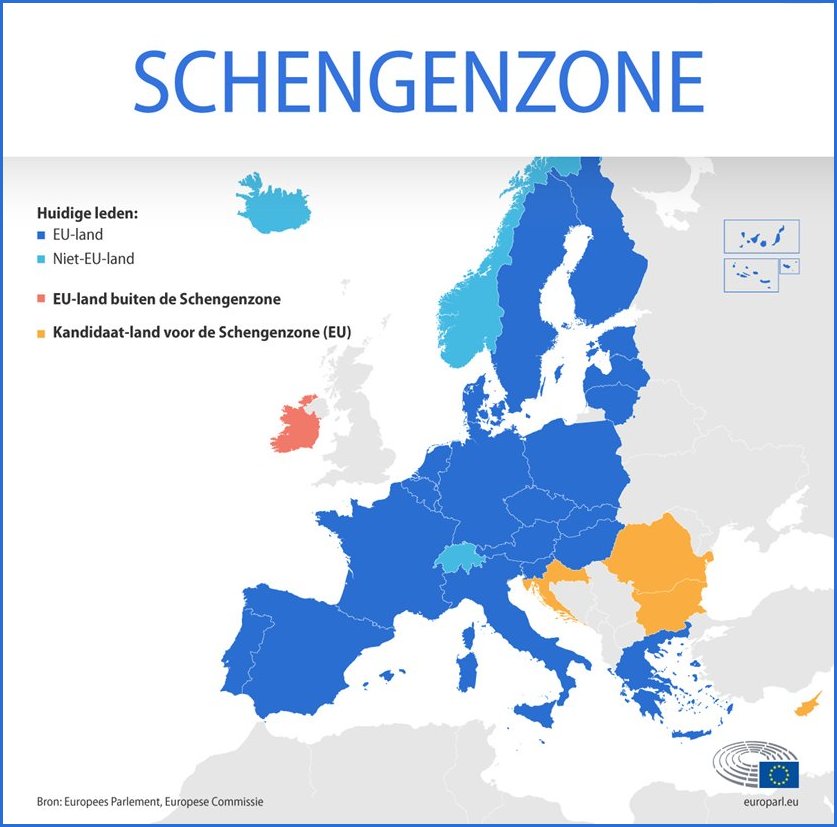 “The strategy invites the Council to decide on the lifting of checks for Bulgaria, Romania and Croatia and integrating them into the Schengen area. Bulgaria and Romania successfully completed the necessary assessment in 2010 and 2011. As for Croatia , the Commission confirmed in October 2019 that Croatia had taken the necessary measures to ensure that the conditions were met.”
“The strategy invites the Council to decide on the lifting of checks for Bulgaria, Romania and Croatia and integrating them into the Schengen area. Bulgaria and Romania successfully completed the necessary assessment in 2010 and 2011. As for Croatia , the Commission confirmed in October 2019 that Croatia had taken the necessary measures to ensure that the conditions were met.”
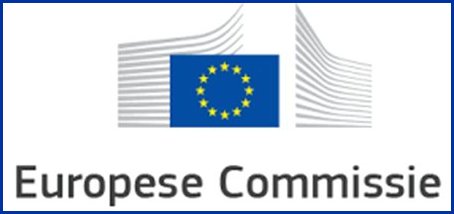 The European Commission also believes that the Republic of Cyprus will be able to join the Schengen area after the successful completion of the evaluation process.
The European Commission also believes that the Republic of Cyprus will be able to join the Schengen area after the successful completion of the evaluation process.
“The strategy also calls for the completion of the extension of the Schengen area so that Bulgaria, Romania, Croatia and Cyprus can take full advantage of Schengen,” said a statement from the European Commission.
Margaritis Schinas, Vice-President Candidate for Promoting the European Way of Life, says Schengen is not complete without all member states.
“Today we propose a new way to ensure the security and mobility of EU citizens while increasing the resilience of Schengen against challenges. Schengen is of course not complete without all our Member States. A more inclusive Schengen will be a stronger and more secure Schengen to be. ”
 “Freedom to travel, live and work in different Member States is a freedom Europeans care about. Today we present a way forward that will ensure that Schengen can stand the test of time, and that will allow the free movement of people, goods and services whatever the circumstances, to rebuild our economies and make us stronger together,” said Ursula von der Leyen, President of the European Commission.
“Freedom to travel, live and work in different Member States is a freedom Europeans care about. Today we present a way forward that will ensure that Schengen can stand the test of time, and that will allow the free movement of people, goods and services whatever the circumstances, to rebuild our economies and make us stronger together,” said Ursula von der Leyen, President of the European Commission.
To strengthen controls at the external borders of the area of free movement, the EU relies on the continued deployment of the new permanent Frontex contingent, which is expected to reach 10,000 coastguards and border guards by 2027.
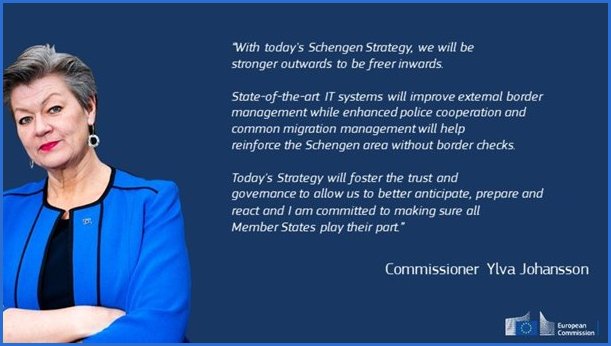
It is also based on the full interoperability by 2023 of information systems for the registration of entries and exits in Schengen. The Commission has also proposed, as part of its asylum reform in the EU, a procedure for registering the arrivals of migrants.
“Advanced IT systems will improve the management of the external borders, while enhanced police cooperation and joint migration management will help strengthen the Schengen area without border controls. The current strategy will encourage trust and governance so that we can anticipate, we are better prepared and responsive and I am committed to ensuring that all Member States play their part,” said Ylva Johansson, European Commissioner for Home Affairs.
What is the new Schengen strategy aiming for?
- Ensure efficient management of the EU’s external borders through the continued deployment of Frontex; interoperability of information systems for border and migration management by 2023; and a future proposal on the digitization of visa applications and travel documents. The Commission also calls on the co-legislators to swiftly adopt the new Pact on Migration and Asylum on the investigation of persons crossing without authorization.
- The internal consolidation of the Schengen area, as close cooperation between Member States to prevent and combat security threats is crucial to support and compensate for the lack of internal border controls. The new initiatives will include an EU Police Cooperation Code; modernization of the “Prüm” framework for the exchange of information on DNA, fingerprints and vehicle registration; and expanding the use of advanced passenger information on flights within Schengen. The new Pact on Migration and Asylum, once adopted, will also establish a common approach to migration management, an important element for the smooth functioning of the Schengen area.
- Improving preparedness and governance: the Commission proposes today to review the Schengen evaluation and monitoring mechanism. It will also regularly convene Schengen fora to encourage political dialogue on tackling common challenges, based on annual reports on the state of Schengen. By the end of this year, the Commission will propose a revision of the Schengen Borders Code to make Schengen more resilient to serious threats, ensure close coordination and put in place the necessary safeguards so that the reintroduction of internal border controls remains a last resort. The Commission will also present a contingency plan to reactivate the successful green lane system for uninterrupted freight traffic in the event of future crises. And last but not least,
- Extension of the Schengen area: The future of Schengen should be marked by extension to the EU Member States that are not yet part of the Schengen area. This is both a legitimate expectation and a legal obligation for the countries assessed as ready for accession.
Currently, the Schengen area consists of all EU countries, except Bulgaria, Romania, Croatia, Cyprus and Ireland. It also includes four non-EU countries: Iceland, Norway, Switzerland and Liechtenstein.
President Iohannis: Joining the Schengen area remains an important political goal for Romania
President Klaus Iohannis said on Wednesday, June 3, that accession to the Schengen area “remains an important political goal for Romania”, although the health crisis has seriously affected the area. “As far as Schengen is concerned, in the context of the health crisis and the measures taken by some Member States, the functionality of the Schengen area has clearly been seriously affected. However, accession to the Schengen area remains an important political objective for Romania and is part of the commitment made by our country through the Accession Treaty to the EU,” said the head of state during the debate. “Let’s talk about the future of Europe”, in which he participated online.
In addition, he underlined that “Romania has fulfilled the necessary criteria for more than ten years and is an example in ensuring the security of the European Union.” “We hope that our consistent efforts will be recognized quickly and that a resolution will be found in time to complete the process.
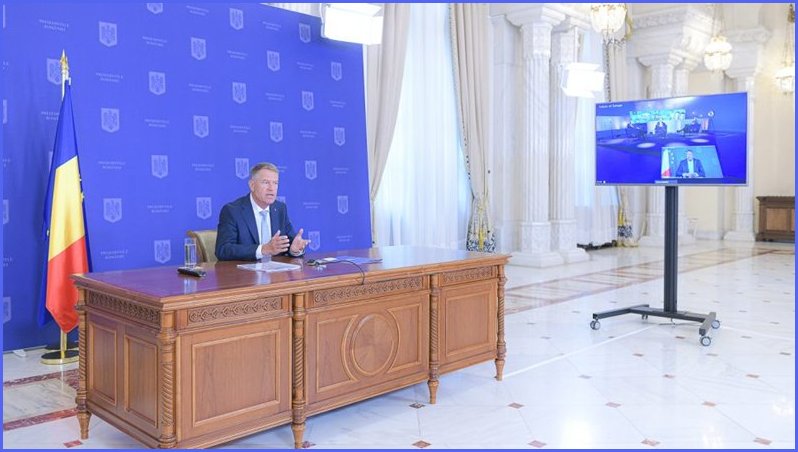
At the same time, joining the eurozone is one of Romania’s key medium-term goals,” he said. According to Iohannis, “Romania’s membership in both the Schengen area and the Eurozone is an important step in consolidating our participation in the essence of the European project.” “The effects of the pandemic crisis have highlighted certain shortcomings in areas where further efforts are needed to have better mechanisms in both Schengen and the Eurozone.

From this perspective, Romania intends to play an active role in all efforts to resolve these issues,” the president also said.
The debate, also attended by EPP Group President Manfred Weber and MEP Siegfried Mureriedan, was organized by the Group of the European People’s Party (EPP) in the European Parliament. We must strengthen the resilience of the European Union The level of development between European Union member states is uneven, President Klaus Iohannis said on Wednesday, calling for “a medium- and long-term vision for the European Union”. “The dialogue on the future of Europe will have to provide a medium- and long-term vision for the European Union. We need to strengthen the European Union’s resilience, not only increasing its capacity to face emergencies, but also to adapt and implement reforms so that we are all prepared for the opportunities and challenges of the future. But we are not starting from scratch in this endeavor,” he said during the online debate “Let’s talk – Future of Europe”, organized by the Group of the European People’s Party (EPP) in the European Parliament. In this sense, he appreciates that a basis is reflected in the Strategic Agenda of the European Union 2019-2024.

In his view, the conference on the future of Europe “should give citizens the opportunity to show where they see the actions of the European Union as important for their lives” and mentioned the 10 commitments in the Sibiu Declaration, after the top of 2019. The head of state stressed that “we must not forget that within the European Union, the level of development between Member States and regions is uneven, requiring sustained effort to ensure that the future will lead to greater cohesion, rather than widening the gaps . For example, he appreciated that “the Union’s strategic resilience must begin as an internal process of transformation and construction” and that in the long term resilience “must be strengthened by taking decisions that will limit the dependencies on the European Union”.
Geopolitical developments in and around the Black Sea
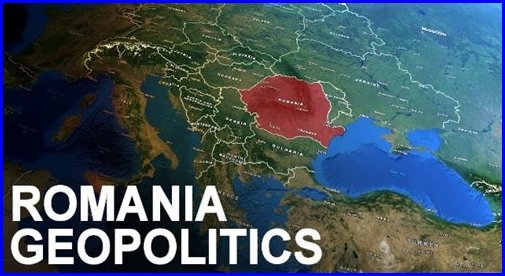 In part of the business community, there is reticence or cold feet when the word “politics” is used in any context. However, the great interrelationship with politics or government and
In part of the business community, there is reticence or cold feet when the word “politics” is used in any context. However, the great interrelationship with politics or government and seen from an economic point of view, business requires a corresponding attitude. After all, a politically stable climate (think of legislation, the government as client
seen from an economic point of view, business requires a corresponding attitude. After all, a politically stable climate (think of legislation, the government as client
and determining tax-friendly policies) is an important, if not the most important, criterion for whether or not to invest in and do business with the country. Of course, the European Union has a positive influence on this. However, EU Member States that form the external border of the EU require extra attention and appropriate measures. The Black Sea region is therefore at the center of geopolitical relations in this regard – or at least it should be. A few examples to illustrate, in which we focus on Romania as one of the most stable states in the Black Sea region.
Romania, Poland, Hungary and Bulgaria to invest in gas market
According to the national official plans for their energy and climate sectors submitted to the Commission, Poland, Hungary, Romania and Bulgaria see a major role for gas in their energy systems in the next 5 to 10 years. All countries belong to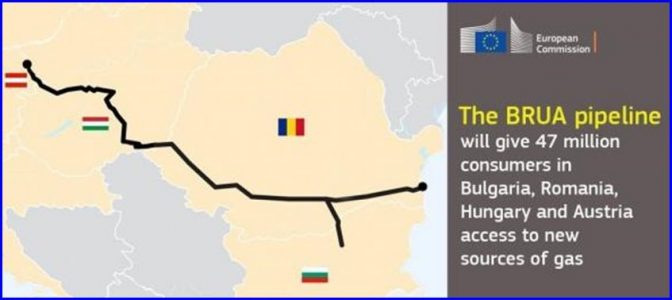 plan to increase their domestic production of natural gas, with Romania having the greatest potential in terms of accessible reserves, making it the second largest gas producing EU country. With regard to their domestic gas infrastructure, all countries foresee measures to develop and upgrade existing gas infrastructure to improve energy efficiency. New infrastructure for international interconnections will also be built to facilitate import diversification, which will promote energy security and contribute to an integrated and competitive gas market in Central and Eastern Europe. However (see message below) developments on the Turkish side of the Black Sea could have a negative impact on the aforementioned intention, especially in Romania. The latter country has already completed the first phase of the gas infrastructure (BRUA pipeline). It is still unclear whether Poland will join this pipeline, negotiations are ongoing.
plan to increase their domestic production of natural gas, with Romania having the greatest potential in terms of accessible reserves, making it the second largest gas producing EU country. With regard to their domestic gas infrastructure, all countries foresee measures to develop and upgrade existing gas infrastructure to improve energy efficiency. New infrastructure for international interconnections will also be built to facilitate import diversification, which will promote energy security and contribute to an integrated and competitive gas market in Central and Eastern Europe. However (see message below) developments on the Turkish side of the Black Sea could have a negative impact on the aforementioned intention, especially in Romania. The latter country has already completed the first phase of the gas infrastructure (BRUA pipeline). It is still unclear whether Poland will join this pipeline, negotiations are ongoing.
Turkey has made a new discovery of natural gas in the Black Sea ,
Turkey has made a new discovery of natural gas in the Black Sea, President Recep Tayyip Erdogan said, adding that Ankara will step up its research in hopes of cutting its high energy bills, AFP said. “A new discovery of 135 billion cubic meters has been made in the Amasra-1 exploration well,” Erdogan said in a speech in Zonguldak
The discovery was made in a field called Sakarya, where Turkey announced last year that it had found 405 billion cubic meters of natural gas in another exploration well. The amounts of gas discovered by Ankara remain modest compared to the world’s largest deposits, and experts expect high mining costs, especially because of their depth.
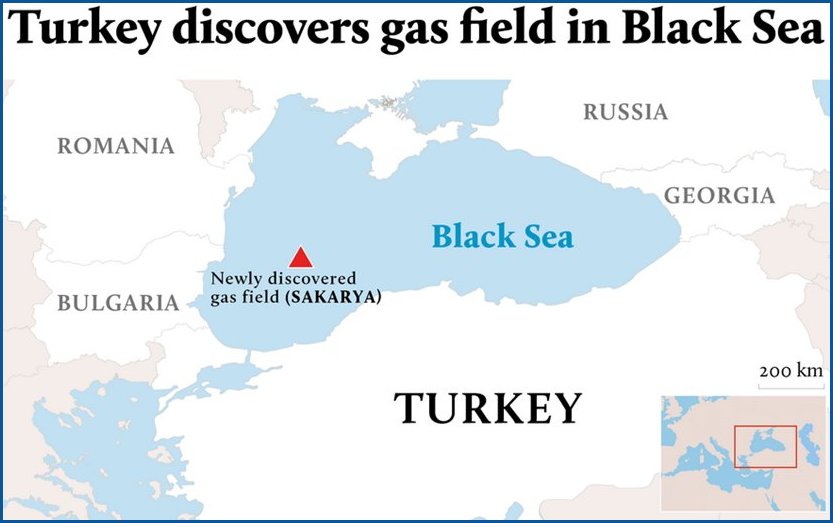
But Ankara’s efforts to find hydrocarbons reflect its desire to become a major energy player, and the exploitation of these resources should help lower Turkey’s energy bill. Turkey annually consumes between 45 and 50 billion cubic meters of natural gas, almost entirely imported, mainly from Russia. According to the Energy Market Supervisory Authority (EPDK), this concerns approximately € 11 billion. After the discovery of the first field in March, Erdogan promised that this “100% Turkish” natural gas would reach homes by 2023, the year of the next presidential election. In parallel with its research in the Black Sea, Ankara has stepped up its initiatives in the Eastern Mediterranean, where the discovery of huge natural gas reserves in recent years has fueled the appetites of riparian states. Turkey’s drilling in Greek and Cypriot waters in recent months has sparked tensions and reinforced the diplomatic isolation of Ankara, which is now trying to calm relations with its Mediterranean neighbors.
In Romania, developments are being watched closely because it has not yet been established to what extent their (adjacent) gas fields affect or overlap Turkish claims.
The construction of the channel between the Black Sea and the Sea of Marmara will start this month
Turkish President Recep Tayyip Erdogan said construction work on a canal connecting the Black Sea to the Sea of Marmara, a massive dollar project, will begin in June, even as the pandemic continues to hit the Turkish economy, Bloomberg reports. President Erdogan’s announcement comes a decade after he launched this “crazy project” on a 45-kilometer waterway to relieve pressure on the Bosphorus. In a government report published in 2019, the channel’s estimated price was £75bn (then $13bn).
Erdogan is counting on the channel to spawn new cities and create thousands of jobs along the way, reversing Turkey’s waning popularity ahead of the 2023 presidential election.
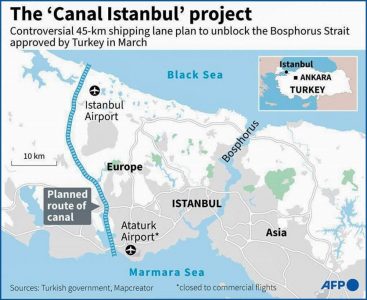
In his 18 years in power, Erdogan has invested tens of billions of dollars in massive infrastructure projects such as the new Istanbul airport, a new bridge over the Bosphorus and major hospitals.
The channel between the Black Sea and the Sea of Marmara is said to give birth to a new city of half a million inhabitants and several bridges will connect the two shores.
“We will lay the foundations for the Istanbul Canal at the end of June,” Erdogan said on Saturday at a commemoration ceremony of the Ottoman conquest of Constantinople in 1453. “We will build two cities on both sides of the Istanbul Canal. Thanks to these cities, the beauty and strategic importance of Istanbul will increase,” added the Turkish leader.
Erdogan dismissed concerns from his political rivals that the project would harm taxpayers, harm the environment and violate the Montreux Convention governing shipping in the Bosphorus. Erdogan said Turkey would not abandon the 1936 Montreux Convention because military ships would be able to use the new channel.
The Montreux Treaty is a 1936 agreement that established Turkish control of the Bosphorus and Dardanelles straits and the transit of warships at sea. The treaty guarantees the free passage of civilian ships in peacetime, and restricts the passage of naval ships that do not belong to Black Sea states (they cannot stay in the Black Sea for more than 23 days). The terms of the Convention have been a source of controversy over the years, particularly over the Soviet Union’s military access to the Mediterranean.
The now proposed Istanbul Channel may be a possible diversion from the Treaty of Montreux and allow greater Turkish autonomy over the passage of military ships (which are limited in number, tonnage and armament) from the Black Sea to the Sea of Marmara
Istanbul Mayor Ekrem Imamoglu has vowed to use all legal means to block Erdogan’s plan as it poses a risk to the environment and infrastructure. According to the mayor, the construction of such a canal threatens to reduce access to drinking water for the 16 million inhabitants of Istanbul.
Another argument made by opponents of this project is that its usefulness does not justify it, as sea traffic through the Bosphorus has steadily declined over the past decade. According to the Turkish Ministry of Transport, about 38,400 ships crossed the Bosphorus last year, compared to about 55,000 in 2006, although the total tonnage increased by about 30%.
The Istanbul Canal would start in the Kucukcekmece district near the Sea of Marmara, where there is already an inland lake, and go to the Sazlidere reservoir, after which it will end in the Black Sea, north of Durusu. With a depth of 25 meters and a width of 400 meters, the new canal would be integrated with new ports and logistics centers, and will contain three underground tunnels for vehicles.
For Romania, this canal construction implies a positive impact on the Romanian deep-sea port of Constanta.
Healthcare sector
Long-term crisis of general practitioners in Romania still not solved
There has been a crisis of general practitioners in Romania since the 1990s. At present, more than 700 places in the country do not have a GP post. There are whole areas where doctors, who have to take care of the first contact with patients, are completely absent. And there are many places where GPs have long passed retirement age, but they have stayed on the job because there is no one to replace them, and pensions are low. During the pandemic, the residents of 8 Vrancea municipalities do not have a general practitioner.
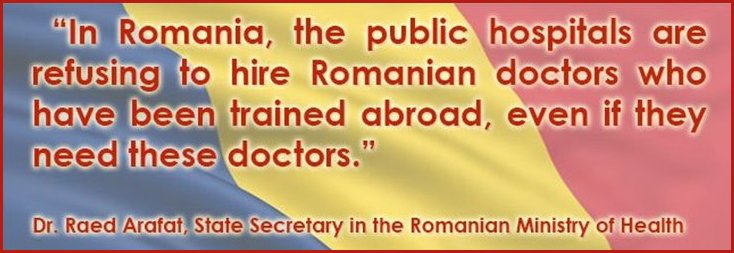
Most come from the mountain area, on the outskirts of the districts, and have a population of between 1,700 and 3,100 inhabitants, mainly the elderly and children. For example, the municipality of Andreiaşu, located about 60 kilometers from Focşani, has 6 villages, and the locals, most of them elderly, cannot walk to the center, where the pharmacy is located. The head of the medical university in Vrancea says that he has been facing this situation for years, but that he has nothing to do, even though there are dispensaries in some areas. 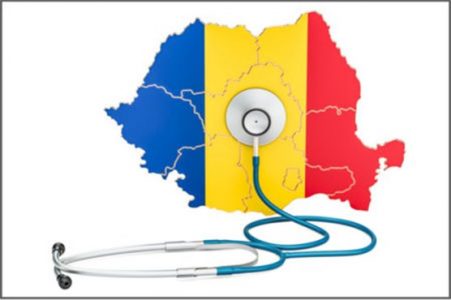 Vrancea is just one of many districts with a shortage of general practitioners. There are many reasons, say those who work in the field. As in Vrancea, in the other districts on the list, the worst situation is in the villages. Another problem is that 37% of GPs are now over 60 and retiring, preferring to remain in business because pensions are low. It seems to us that the Romanian Ministry of Health needs to drastically change its policy.
Vrancea is just one of many districts with a shortage of general practitioners. There are many reasons, say those who work in the field. As in Vrancea, in the other districts on the list, the worst situation is in the villages. Another problem is that 37% of GPs are now over 60 and retiring, preferring to remain in business because pensions are low. It seems to us that the Romanian Ministry of Health needs to drastically change its policy.
Private health care is of a high standard, but these clinics are only located in urban areas, but public health care leaves much to be desired.
The Netherlands is still one of the countries with a high epidemiologically high risk
The Romanian government updated the list of Romania’s color code is yellow on Friday, May 22. You no longer need to be in home quarantine after returning from Romania and you do not need to test before returning. Traveling to Romania is possible, but please note: there are entry restrictions.
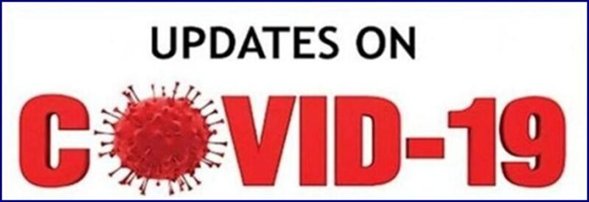
As a traveler from the Netherlands, you must be in (home) quarantine upon arrival in Romania if you are not fully vaccinated. For entry and exit restrictions, local corona measures, information about mandatory tests and about home quarantine, also when you travel (back) to the Netherlands, see the ‘Coronavirus’ section. Read the entire travel advice.
Entry Restrictions
Test obligation
Travelers from the Netherlands from 3 years old must show a negative PCR test on arrival that is not older than 72 hours. You may enter Romania without testing if you are fully vaccinated. You must be able to show this. There must be at least 10 days between the time of the 2 e vaccination and arrival in Romania.
Home quarantine
Only if you have had a full vaccination, you do not have to be quarantined at home for 14 days on arrival in Romania. All other travelers must be in home quarantine. This obligation also applies if you can demonstrate a negative PCR test on arrival. After 8 days of home quarantine, you can do a PCR test in Romania. The quarantine period can be shortened to 10 days if the test result is negative and you have no symptoms.
Fully vaccinated travelers from countries on Romania’s ‘red list’ also do not need to be quarantined if there is 10 days between getting the 2 e vaccination and arrival in Romania. You must be able to show this with the proof issued by the authority that administered the vaccine. Here should also be the date of the 2 e vaccination are listed.
Also read the information on the website of the Romanian Border Police (information in English) and the Romanian RIVM (information in Romanian).
Coronavirus
The authorities have taken measures to reduce the spread of the coronavirus (COVID-19) in Romania.
Wearing a mask in public public places (such as offices, shops, public transport) is mandatory in Romania.
Report to the local health authorities if you have complaints or symptoms that resemble the coronavirus. Instructions can be read on the website of the Romanian GGD (information in Romanian).
Medical care
The public healthcare in Romania is less good than in the Netherlands. Medical facilities are limited outside the major cities.
The authorities have improved their vaccination program for, among other things, measles since 2010. Many people are not yet or not fully vaccinated. Especially young people and people with a low resistance can be infected.
Testing and home quarantine in the Netherlands
Due to the improved health situation in Romania, you will not have to go into home quarantine from 28 May 2021 after a stay in Romania in the Netherlands. From May 28, 2021, there is also no obligation to test before traveling to the Netherlands.
Follow the advice of the National Institute for Public Health and the Environment (RIVM) and the World Health Organization (WHO).
Wash your hands well regularly, blow your nose in paper and throw the paper away after blowing, then wash your hands well again. This also applies when you cough and sneeze. Consult a doctor immediately if you develop a fever and respiratory symptoms.
Health situation
On the website of the National Coordination Center for Traveler Advice, you will find information about current epidemics, recommended vaccinations and measures to prevent malaria and other infectious diseases in Romania. For more information, contact a doctor or vaccination agency near you.
Disclaimer

The newsletter of the Dutch Romanian Network is compiled with great care. The Dutch Romanian Network cannot accept any liability for a possible inaccuracy and/or incompleteness of the information provided herein, nor can any rights be derived from the content of the newsletter. The articles do not necessarily reflect the opinion of the board.
